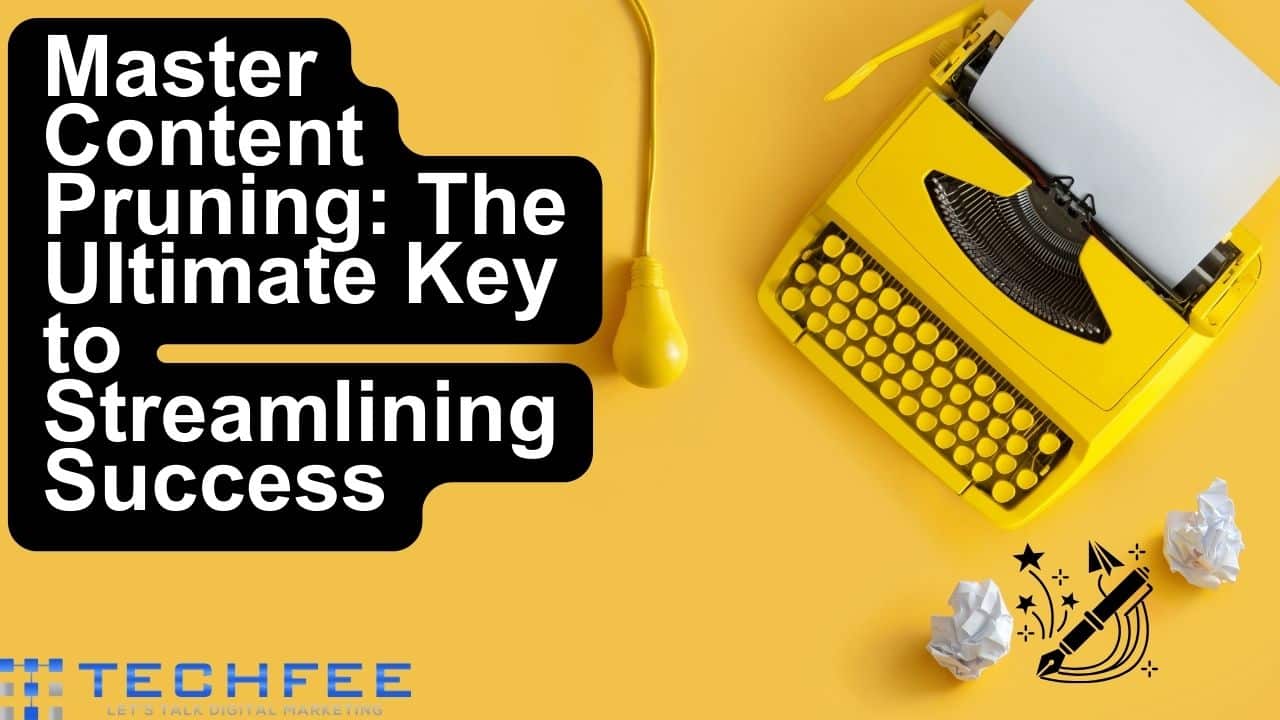Let’s learn together the content pruning benefits in this post.
Imagine your website as a lush garden. Over time, it blossoms with valuable content, but like neglected drying leaves, some pieces wither and cast shadows over the fresh plants.
If you switch the lush garden with your Digital Content in the example, the process of maintaining & optimizing content is called Master Content Pruning.
Simply put, it is the strategic removal of outdated, low-performing content to revitalize your site.
It’s not about slashing and burning, but about nurturing your best pieces, boosting SEO and ensuring visitors find what they seek in a vibrant, organized space.
Content pruning isn’t just content maintenance; it’s a comprehensive tool for crafting a thriving website.
Why do we need to Prune Content? - The Content Pruning Benefits
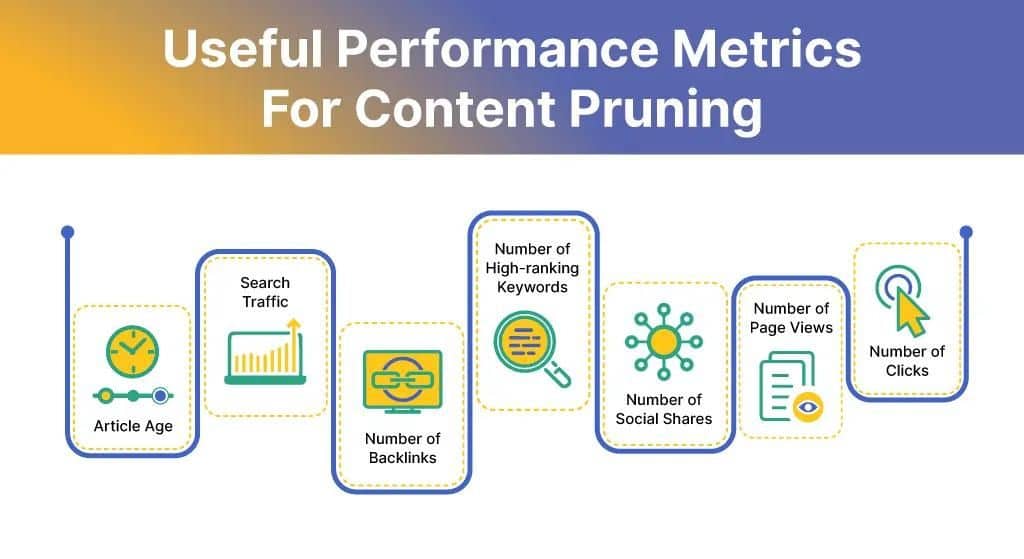
Let me guide you through the most important benefits:
Boost Your SEO: When you Master Prune your content, you’re making it easier for Search Engines to find and index the pages that matter most. This can boost your website’s SEO, leading to more organic traffic and higher search engine rankings.
Improve User Experience: By pruning your website, you’re making it easier for visitors to navigate and find the information they need, quickly and easily.
Free Up Resources: When you prune away the content you don’t need, you’re freeing up those resources for the pages that really matter. This can make your website faster and more efficient, which is good for both you and your visitors.
Make a Statement: A well-pruned website sends a clear message to your visitors: you’re a professional, organized business that cares about providing quality content.
The Foundation of Successful Pruning
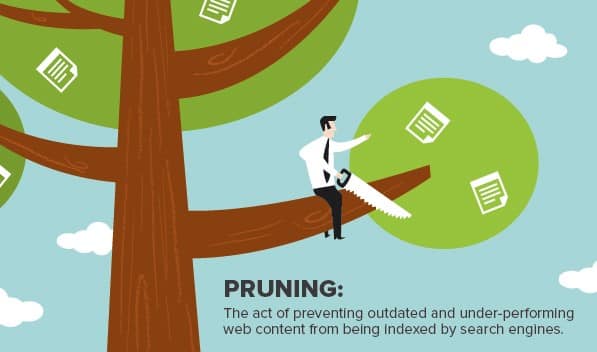
Now that you have understood Master Content Pruning, you might be wondering, ‘Where do I start?
I have mountains of content on my website!” Successful pruning isn’t about hacking away blindly; it’s about wielding your machete with laser precision.
And that precision comes from two fundamental attributes: defining your goals and objectives and conducting a thorough audience analysis.
Defining Goals and Objectives
Ask yourself, “What do I want my website to achieve?” It could be to boost leads? Or improving engagement? Or probably drive sales?
Once you have your clear goal, break it down into specific, measurable objectives and build your Master Pruning Strategy around it.
Audience Analysis
With clear goals defined, now get inside the heads of your visitors. Who are they? What problems are they looking to solve?
Tools like Google Analytics and user surveys can unveil your audience’s desires and pain points. This intel helps you identify content that resonates and flag the pieces that are not getting traction.
By aligning your goals, understanding your visitors and wielding your Master Content Pruning tools with intent, you’ll transform your website from a jungle of content into a well-maintained nature park!
Evaluating Existing Content Landscape
After figuring out the end goal that you wish to achieve with your content and gathering a rough understanding of your audience, you might be thinking as to how should you go about evaluating your existing digital content?
That’s where having a Content Inventory comes in handy.
Content Audit and Inventory
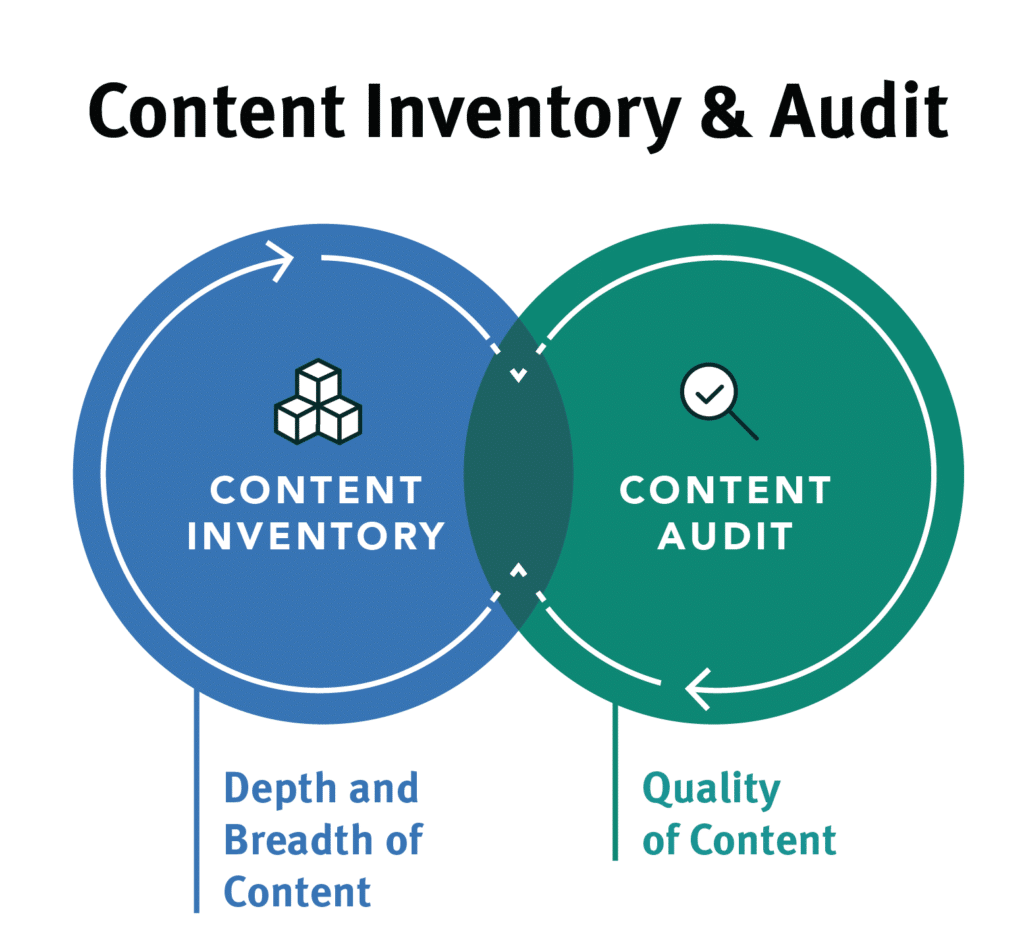
Content Inventory is a list of URLs to all your website content, maintained in Microsoft Excel or some other location that is handy/easy to access. I have shared a couple of tools that will help you create a Content Inventory below:
- Google Search Console
- Semrush Site Audit
Content Inventory based audits form the basis for your Master Content Pruning strategy. Before understanding how to identify redundant and underperforming content, let me share an expert tip. Capture the following information in your CI:
- Title & URL
- Authored by
- Date of Publication
- Traffic generated by the content
Identifying Redundancies and Underperforming Content
You now have compiled a map of your content. Next, it’s time to identify the obsolete content where engagement are low and click through rates keep falling.
I would like to use the example of Google Search Console. On the left hand column, navigate to the “Search Results” domain under Performance.
Under ‘Performance on Search Results’ set the date to 6 to 12 months. This provides you with a data set. Next, click on the “Pages” section and conduct a swift sort by ‘Click’.
Analyze the content performance. Check if Google bots are having trouble crawling them, or if their titles simply lack attraction that earns the click. Perhaps a keyword revamp or a catchy makeover is all they need to start performing.
Content pruning is about strategic renewal, not blind dismissal. By understanding why these pages underperform, you can either give them a fresh lease on life or send them off, freeing up space for new stars to shine.
Wear your Sherlock Holms hat and solve the puzzle. The key to successful Streamlining and Optimization of Content is clarity. You have to decide what goals your content needs to achieve.
Crafting a Content Pruning Strategy
After conducting a Content Audit based on your Content Inventory, you have data on the performance of your content.
Your next move is to decide what you do with low-performing content. You can either unpublish/remove, send it into exile by ‘no indexing’ it or treat it to make it perform.
Unpublish/Remove: Think of this as the nuclear option. For content that is outdated, full of errors or simply irrelevant to your audience, unpublishing ceremony might be the right choice.
Remember, Google favors fresh, relevant content, so don’t let the underperforming content drag your SEO score down.
Send into Exile: Not all content deserves complete obliteration. Maybe an article has solid bones but lacks SEO juice or suffers from dysfunctional title.
Consider removing it from search results using robots.txt or noindex tags in these cases. It still lives on your site, accessible if someone stumbles upon its internal link, but it won’t actively compete for search engine ranking.
Treat it with a makeover: Sometimes, all an underperforming article needs is a little modification. Spruce up the content with updated information, inject some fresh keywords, and polish that headline. This option is ideal for evergreen topics or content with a strong foundation that just needs a twist.
Execution: Pruning Techniques and Best Practices
Your content audit is now complete, and your spreadsheet is talking to you about underperforming pages. Its time to execute your Content Pruning plan with surgical precision. Here are some best practises followed by successful high-traffic websites:
Content Consolidation:
Have two articles tackling the same topic? Don’t toss either! Instead, fuse their best bits into one. Merge them chronologically or based on audience appeal. Helpful to remind you that one optimized piece is worth more than two underperforming ones.
Updating and Repurposing:
Are the facts in your article outdated? Content style lost its appeal? Refresh content with current data, tweak the writing for engagement and consider a format makeover.
For example, if you are conducting content pruning on one of your underperforming blog, transform it into a vibrant infographic or snappy video. Repurposing breathes new life into dormant content, boosting engagement and SEO.
Deletion and Redirects:
Sometimes, farewell is necessary. For content riddled with errors or irrelevant to your audience, a permanent send-off might be best. But even in deletion, there’s a method.
Don’t leave broken links, use redirects to send visitors to related and high performing pages. This maintains user experience and preserves SEO.
My Tip: Before deciding on the fate of your content, ask yourself these critical questions:
· Why is this article underperforming? Is it the topic, writing style or SEO issues?
· Can the content be salvaged with a refresh? A new spin, better visuals, or maybe keyword optimization might do the trick.
· Does the article have any historical value? Maybe it holds sentimental attachment or valuable backlinks.
· What are the potential consequences of each action? Unpublishing might hurt internal linking, while leaving it live could drag down SEO.
That’s a tricky situation to be in.
Take your time, assess each article carefully, and don’t be afraid to get creative. With thoughtful analysis and decisive action, you can transform your blog from a content graveyard into a thriving oasis of valuable, engaging information.
By approaching website content pruning with a strategic mindset and a healthy dose of critical thinking, you can ensure that your website content not only survives but thrives in the ever-evolving digital landscape.
Impact Assessment and Measurement
We have discussed how to devise a Content Pruning Benefit Strategy based on data analysis and executed it. How do we figure out if our strategy was right and the decisions bore fruit? That’s where Strategy Impact Assessment and Measurement comes into play.
Tracking the results of your strategy and measuring its impact (positive or negative) is just as important as carving out the strategy itself.
It serves no one’s purpose to just prune your content and get on with other work. Track and figure out if your judgement call on underperforming content gave desired results.
So, how frequently should one conduct a Content Audit? Industry gurus suggest at least once or twice a year. Your digital content may take several months to begin attracting traffic from search engines.
This is particularly true for smaller websites, while authoritative websites typically experience quicker results with their content.
I have mentioned this before in this blog and shall repeat; effort goes into content generation and simply discarding them based on underperformance pours water over production hours invested.
Keep tabs on your website’s SEO performance effortlessly by leveraging tools such as Google Search Console and Google Analytics. Additionally, stay in the know about your Google rankings by utilizing keyword tracking tools like Semrush, SE Ranking or Ahrefs.
Challenges and Solutions in Content Pruning
In the ever-evolving landscape of digital content, mastering the art of content pruning is crucial for maintaining a relevant and streamlined online presence. However, this process is not without its challenges.
One significant hurdle is the resistance and concerns that often arise when contemplating the removal or reworking of existing content.
Resistance and concerns stem from the fear of losing valuable information, potential backlash from loyal audiences, and uncertainty of the impact on search engine rankings. Addressing these apprehensions requires a delicate balance between preserving what works and acknowledging the need for strategic changes.
Communicating transparently with stakeholders, showcasing the benefits of content pruning, and emphasizing the long-term gains can help ease these concerns.
Overcoming implementation hurdles is another aspect of digital content pruning that demands careful consideration. It involves navigating technical complexities (such as redirecting URLs, maintaining SEO integrity) and ensuring a smooth user experience (during and after the pruning process)
By employing meticulous planning, utilizing automated tools for tracking and managing redirects, and conducting thorough testing, these implementation hurdles can be overcome, paving the way for a more refined and effective digital content strategy.
Embrace these challenges as opportunities for growth & improvement is key to mastering the art of digital content pruning in the fast-paced digital landscape.
Case Studies: Successful Content Pruning Stories
The journey of online content pruning can seem challenging as it involves you taking a judgement call on content that have costed you.
But numerous success stories attest to its transformative power. I have researched a couple of real world Online Content Pruning case studies that showcase how strategic content pruning led to remarkable outcomes.
One noteworthy example is Company X, a leading e-commerce brand. Faced with a sprawling website filled with outdated product listings and redundant content, they decided to implement a comprehensive and benefit-providing content pruning strategy.
By removing obsolete pages, refining product descriptions, and optimizing their site structure, Company X witnessed a significant boost in search engine rankings. The streamlined content not only improved user experience but also resulted in a notable increase in conversion rates.
Similarly, Bloggers United, a popular lifestyle blogging platform, undertook a content pruning initiative to declutter their archives. They identified and consolidated overlapping topics, deleted outdated posts, and updated others to align with current trends.
It resulted in a more cohesive and engaging blog that not only attracted new readers but also reignited interest from their existing audience.
These success stories underscore the transformative impact of online content pruning when approached strategically. By learning from these real-life examples, businesses and content creators can glean insights to tailor their own content pruning endeavors for lasting success.
Integrating Beneficial Content Pruning Strategies with SEO and Marketing
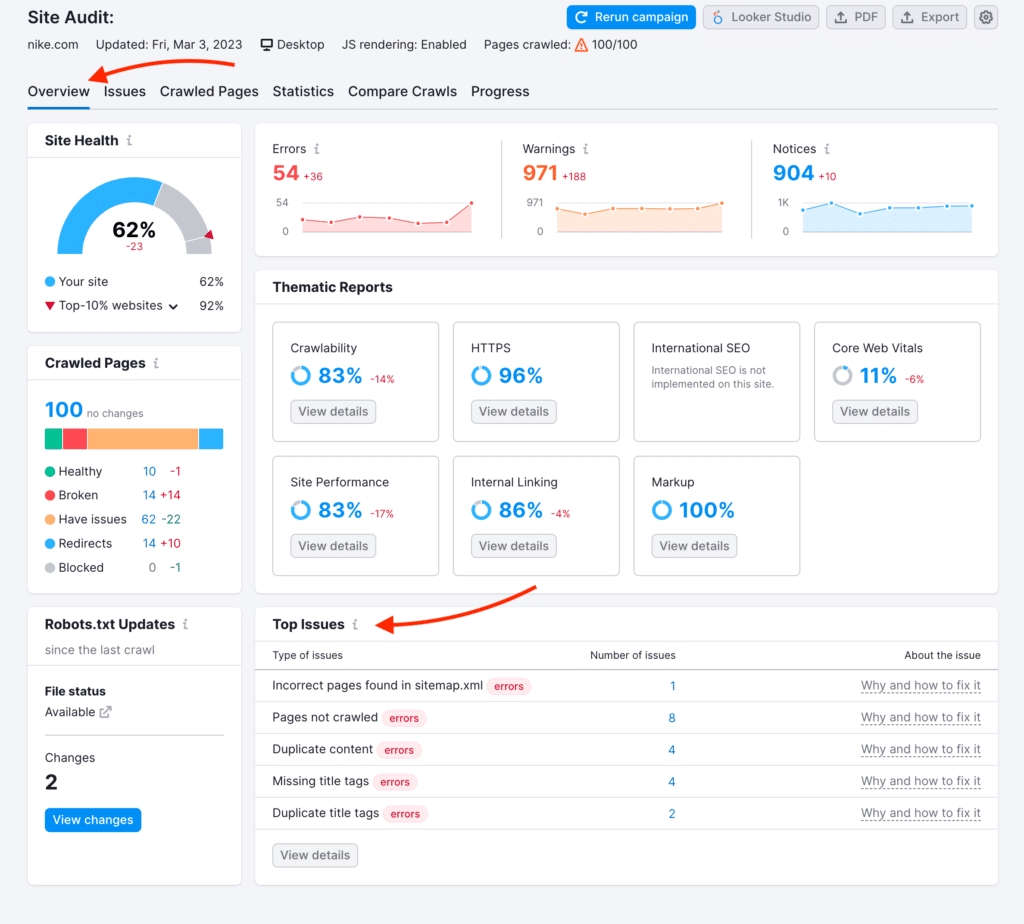
In the ever-evolving realm of digital presence, the integration of content pruning strategies with SEO and marketing initiatives emerges as a game-changer.
Join me in exploring how to one should align their pruning strategy with their SEO goals and how it is leveraged for marketing campaigns.
Aligning Pruning with SEO Goals
- Strategic Focus:
Effective content pruning aligns seamlessly with SEO objectives by focusing on refining the relevance and quality of your digital content. Identify and eliminate outdated, redundant, or low-performing content to enhance overall website health and user experience.
- Keyword Optimization:
Dive into your content analytics to identify underperforming keywords. By strategically pruning and optimizing content around high-value keywords, you not only declutter your site but also boost its visibility in search engine results.
- Redirect Mastery:
A key aspect of aligning your online content pruning strategy with SEO is mastering the art of redirects. Content that is removed should have seamless redirects to relevant, updated pages. This aids in preserving the link equity and maintaining a positive impact on your search rankings.
Leveraging Pruning for Marketing Campaigns
- Content Refinement for Campaigns:
Before launching marketing campaigns, use content pruning to refine your narrative. Streamline messaging, highlight top-performing content and ensure that your campaign aligns with the overall narrative of your brand.
- Targeted Audience Engagement:
Leverage benefit-providing content pruning insights to understand your audience’s preferences better. Tailor marketing campaigns based on the content that resonates most with your audience, ensuring more targeted and impactful outreach.
- Repurposing Gems:
Unearth hidden gems within your existing content through pruning. Identify high-performing pieces that can be repurposed for marketing campaigns, providing a cost-effective way to capitalize on proven successes.
- Metrics-Driven Approach:
Utilize data from your content pruning efforts to inform your marketing strategy. Identify trends, understand user behavior, and refine your campaigns based on real-time insights gained through the pruning process.
By integrating your Content Pruning Strategy with SEO and marketing strategies, you not only enhance your online presence but also creates dynamism that propels your brand to new heights.
The key lies in a holistic approach, resulting in a digital strategy that is not just adaptive but thriving in the competitive digital landscape.
Future Trends in Content Pruning
The world of content optimization and management is an ever-changing minefield. It is witnessing a transformative shift powered by evolving practices and cutting-edge technologies.
Let’s understand this better:
Evolving Practices and Technologies
The future of content pruning is intertwined with emerging practices and technologies that streamline the process. Artificial intelligence (AI) is set to revolutionize content assessment, aiding in the identification of obsolete content and recommending strategic pruning.
Moreover, machine learning algorithms will enable more precise predictions, ensuring that digital content pruning decisions align with evolving user preferences. For instance, platforms like BrightEdge are already integrating AI to automate content optimization that strive to make websites stay ahead of the curve.
Predictions and Forecasts
Looking ahead, experts predict a surge in the use of predictive analytics to forecast content performance and relevance. Content pruning will no longer be a reactive measure but a proactive strategy guided by data-driven insights.
Dynamic content pruning, where adjustments occur in real-time based on user interactions, is poised to become a norm. This is a good opportunity to understand using the example of Contentstack, a content management system that exemplifies this trend by offering predictive analytics for content planning and optimization.
A fusion of advanced practices and technologies marks the future of digital content pruning.
As AI and predictive analytics become more prominent and advanced, content creators and businesses can anticipate a more responsive online world that makes sure their online presence remains not just relevant but better than their competitors.
Conclusion
In conclusion to this interesting topic that was discussed in this blog, we’ve discovered that Content Pruning is not just about trimming the overgrown branches; it’s a strategic cultivation of a thriving digital ecosystem.
We earned the vital role of Master Content Pruning in enhancing SEO and user experience, freeing up resources, and crafting a statement of professionalism.
Successful pruning becomes an art by defining goals, conducting audience analysis, and employing precise tools. Our journey was a deep dive into content evaluation through audits and identifying underperformers, emphasizing the need for strategic renewal over blind dismissal.
We explored the choices of unpublishing, sending into exile, or giving a much-needed makeover to underperforming content in content pruning strategy. Thr ugh practical techniques like consolidation, updating, repurposing, and deletion with redirects, we learned how to breathe new life into the digital realm.
We discovered the importance of asking critical questions before deciding an article’s fate and transforming our blog into a thriving oasis of valuable information.
Our exploration extended to impact assessment and measurement, emphasizing the need to track results and measure the success of our pruning strategy.
Recognizing that effort goes into content generation, we highlighted the significance of content audits and the use of tools like Google Search Console and Analytics to keep tabs on SEO performance.
Lastly, in facing challenges, we understood that transparency, communication, and meticulous planning are the keys to overcoming hurdles in the ever-evolving landscape of digital content.
Our journey is a testament to the transformative power of mastering the art of content pruning for a resilient and thriving online presence.
Frequently Asked Questions
What is content pruning?
Content pruning is the process of removing content from your website that has little-to-no value to your business or its audience. In ddition to removing content, pruning is also the process of consolidating content or removing content from being indexable by search engines.
How often should content pruning be done?
Once or twice a year, as per industry experts. Con ent pruning can be a powerful tool for website optimization, but just like trimming a hedge, it's vital to know when to stop. Ove -pruning, like taking your haircut too short, can leave your website looking bare and less appealing. Som times, content needs time to flourish, especially for smaller websites.
What tools can assist in content pruning?
There are many tools available that aid and assist you in identifying low-performing content and helping you device a Content Pruning Strategy. Her are a few:
- Google Search Console\
- Screaming Frog
- Semrush Site Audit
What are the risks of not pruning content?
The risks of not pruning content, when compared to the benefits of content pruning, include website cluttering and being outdated, reduced search engine visibility, compromised user experience and inefficient use of resources. Wit out pruning, irrelevant or underperforming content can negatively impact SEO rankings, slow down website performance, and hinder the overall effectiveness of your online presence.
Why is content pruning important?
Content pruning is crucial for maintaining a relevant and efficient online presence. It nhances search engine optimization (SEO), improves user experience by streamlining navigation, frees up resources for more impactful content and contributes to crafting a professional and organized image for your website.
What is pruning and why does it happen?
Pruning is the strategic removal of outdated or underperforming content from a website. It occurs to enhance search engine visibility, streamline user experience, optimize resources, and maintain a relevant and organized online presence.
